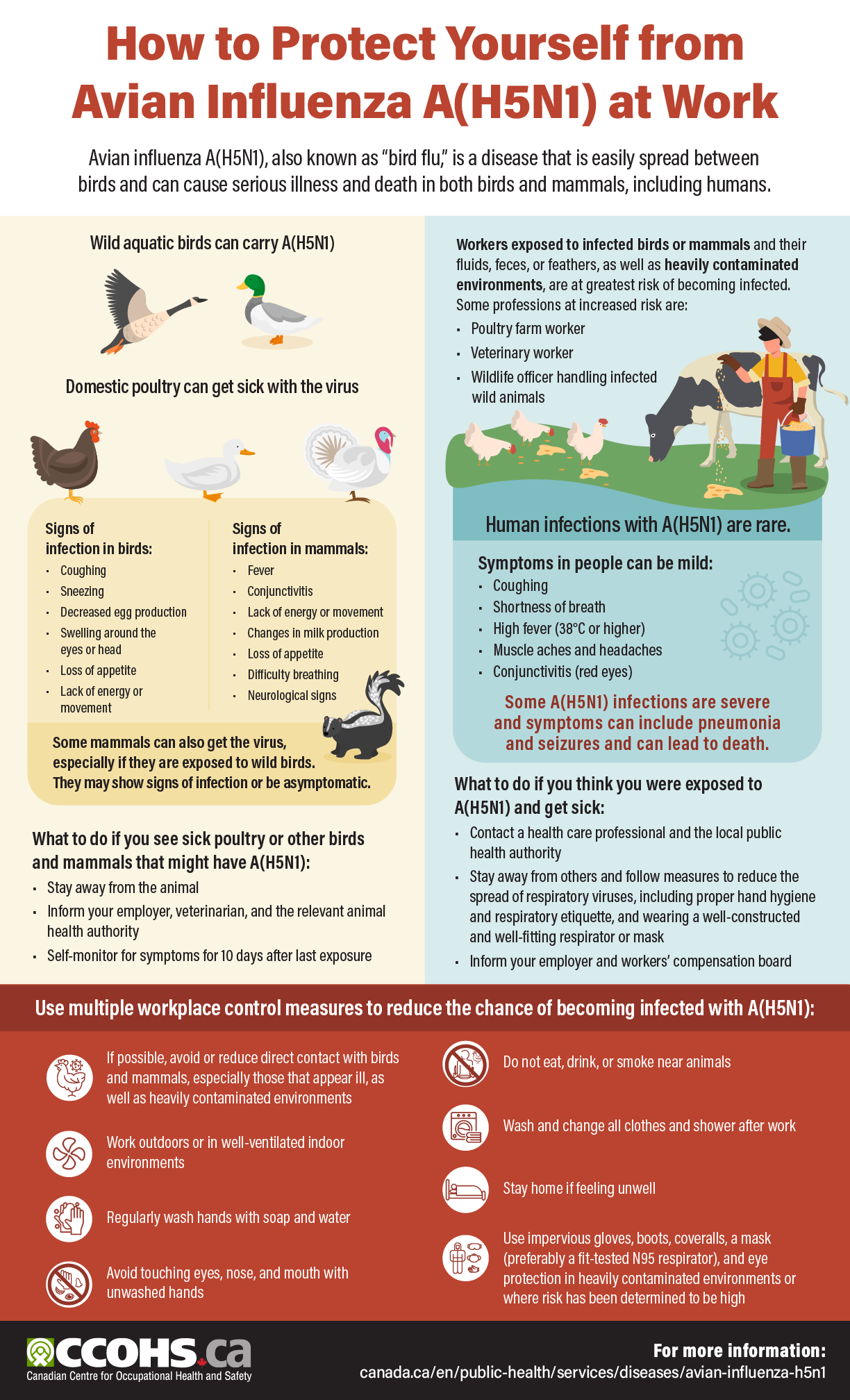How to Protect Yourself from Avian Influenza A(H5N1) at Work

Description: How to Protect Yourself from Avian Influenza A(H5N1) at Work (Updated)
Wild aquatic birds can carry A(H5N1)
Domestic poultry can get sick with the virus
Signs of infection in birds:
- Coughing
- Sneezing
- Decreased egg production
- Swelling around the eyes or head
- Loss of appetite
- Lack of energy or movement
Signs of infection in mammals:
- Fever
- Conjunctivitis
- Lack of energy or movement
- Changes in milk production
- Loss of appetite
- Difficulty breathing
- Neurological signs
Some mammals can also get the virus, especially if they are exposed to wild birds. They may show signs of infection or be asymptomatic.
What to do if you see sick poultry or other birds and mammals that might have A(H5N1):
- Stay away from the animal
- Inform your employer, veterinarian, and the relevant animal health authority
- Self-monitor for symptoms for 10 days after last exposure
Workers exposed to infected birds or mammals and their fluids, feces, or feathers, as well as heavily contaminated environments, are at greatest risk of becoming infected. Some professions at increased risk are:
- Poultry farm worker
- Veterinary worker
- Wildlife officer handling infected wild animals
Human infections with A(H5N1) are rare.
Symptoms in people can be mild:
- Coughing
- Shortness of breath
- High fever (38°C or higher)
- Muscle aches and headaches
- Conjunctivitis (red eyes)
Some A(H5N1) infections are severe and symptoms can include pneumonia and seizures and can lead to death.
What to do if you think you were exposed to A(H5N1) and get sick:
- Contact a health care professional and the local public health authority
- Stay away from others and follow measures to reduce the spread of respiratory viruses, including proper hand hygiene and respiratory etiquette, and wearing a well-constructed and well-fitting respirator or mask
- Inform your employer and workers’ compensation board
Use multiple workplace control measures to reduce the chance of becoming infected with A(H5N1):
- If possible, avoid or reduce direct contact with birds and mammals, especially those that appear ill, as well as heavily contaminated environments
- Work outdoors or in well-ventilated indoor
- Regularly wash hands with soap and water
- Avoid touching eyes, nose, and mouth with unwashed hands
- Do not eat, drink, or smoke near animals
- Wash and change all clothes and shower after work environments
- Stay home if feeling unwell
- Use impervious gloves, boots, coveralls, a mask (preferably a fit-tested N95 respirator), and eye protection in heavily contaminated environments or where risk has been determined to be high
More information: canada.ca/en/public-health/services/diseases/avian-influenza-h5n1.html
Document last updated on: 2024-08-21

